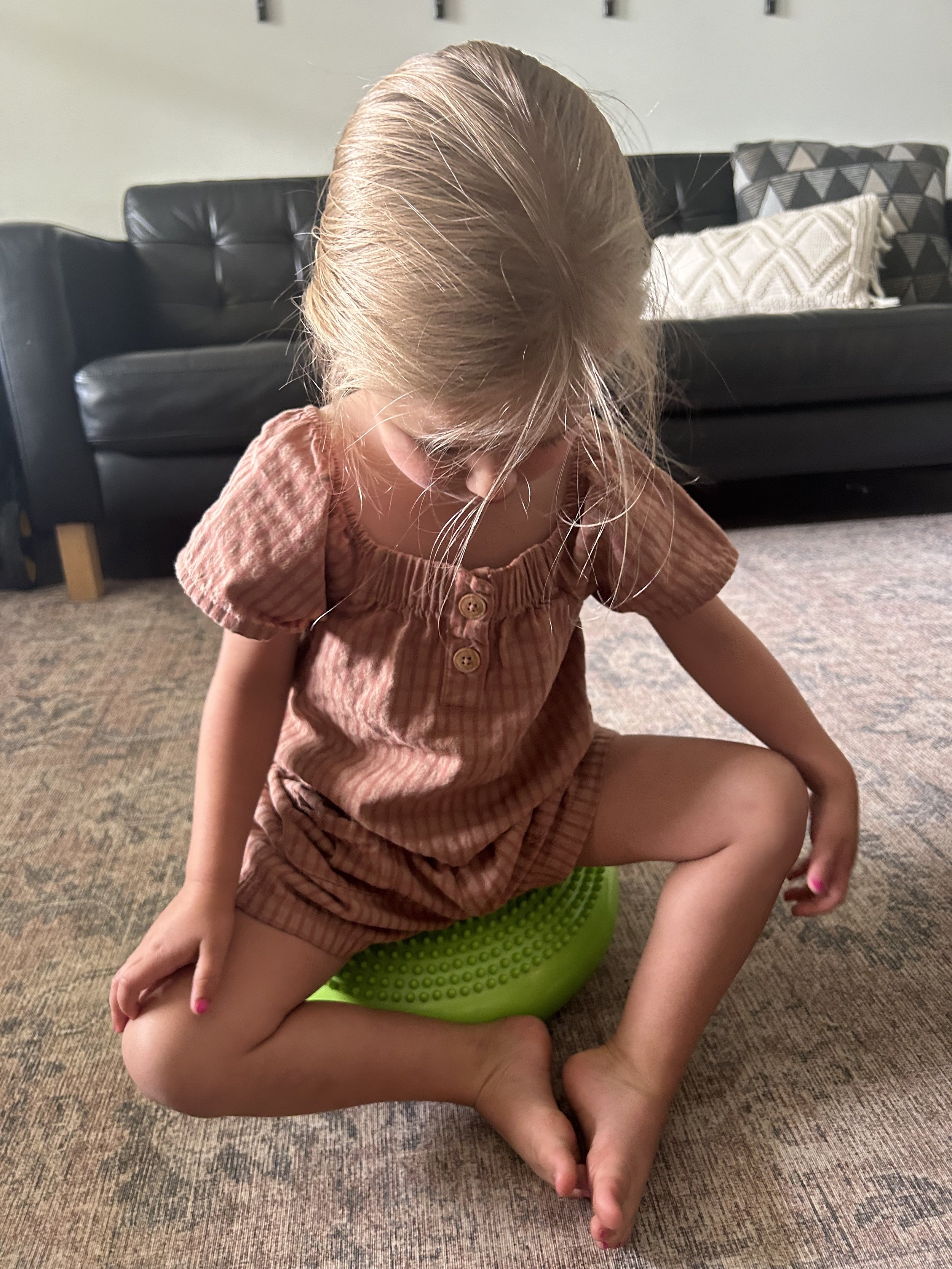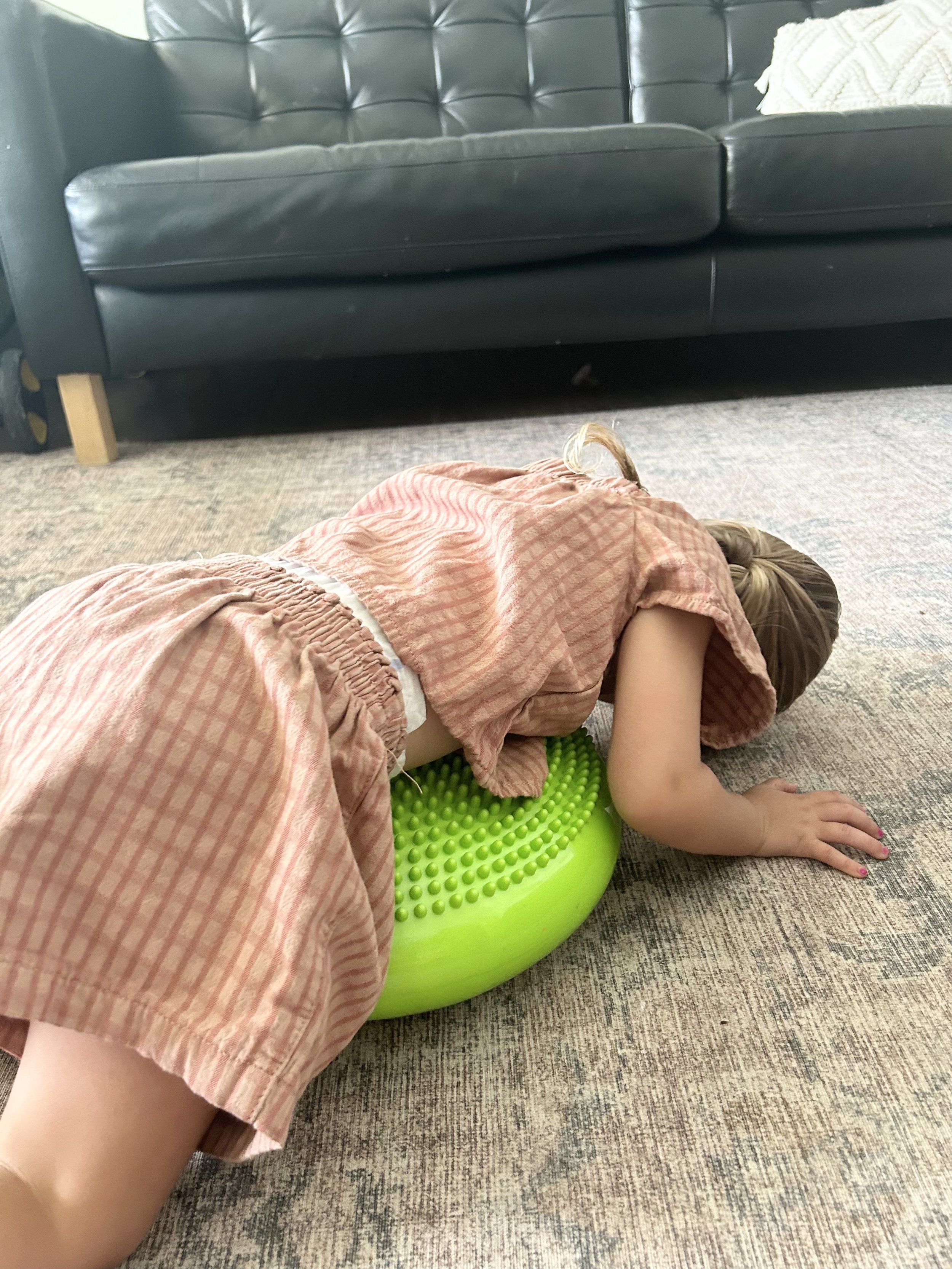Why is this our favorite sensory item for the home and the classroom?
Are you looking for a tool to use in your classroom that: helps children develop gross motor skills, increase their focus, and provide sensory feedback? One of our very favorite classroom tools can do all that. It’s a wobble cushion! Keep reading to see how we use them in our classrooms and home for our preschoolers.
What is a Wobble Cushion?
A wobble cushion, also known as a stability cushion or balance disc, is an inflatable, round cushion typically made of durable rubber or PVC. It has a textured surface on one or both sides and can be inflated to various levels to provide different levels of stability and challenge. When a child sits, stands, or kneels on it, the cushion creates an unstable surface, engaging the core muscles and promoting balance. You can find one on Amazon right here!
The Preschool Place is a participant in the Amazon Services LLC Associates Program, an affiliate advertising program. As an Amazon Associate, we earn from qualifying purchases. Benefits of Using a Wobble Cushion for Preschoolers
Improved Balance and Coordination: Using a wobble cushion helps preschoolers develop better balance and coordination by challenging their stability. This can be particularly beneficial for children who are still mastering gross motor skills.
Enhanced Core Strength: Sitting or standing on a wobble cushion engages the core muscles, helping to strengthen the muscles in the abdomen, back, and pelvis. A strong core is essential for overall physical development and can improve posture.
Increased Focus and Concentration: The subtle movements required to stay balanced on a wobble cushion can help children stay alert and focused. This is especially useful for preschoolers who may have difficulty sitting still during activities like story time or circle time.
Sensory Input: The textured surface of a wobble cushion provides sensory input, which can be calming for some children. This sensory feedback can help children who have sensory processing issues or who need extra stimulation to stay engaged.
Versatile Use: Wobble cushions are portable and can be used in various settings, including home, school, and therapy sessions. They can be incorporated into playtime, learning activities, and even while watching TV.
How to Use a Wobble Cushion with Preschoolers
Start Slowly: Introduce the wobble cushion gradually. Allow your preschooler to explore it by touching and sitting on it while it's on the floor. Encourage them to bounce or wiggle gently to get a feel for the cushion's movement.
Incorporate into Daily Activities: Use the wobble cushion during activities that require sitting, such as reading a book or eating a snack. This helps integrate the cushion into their routine naturally.
Balance Exercises: Encourage your preschooler to stand on the wobble cushion with both feet. Hold their hands for support if needed. Once they feel comfortable, challenge them to stand on one foot or shift their weight from side to side.
Core Strengthening Games: Make core exercises fun by turning them into games. For example, have your child sit on the wobble cushion while reaching for toys placed around them. This encourages twisting and reaching movements that engage the core.
Circle Time Tool: During circle time or group activities, allow children to sit on wobble cushions instead of traditional chairs. This can help them stay engaged and focused for longer periods.
Sensory Breaks: Use the wobble cushion as part of a sensory break routine. When your child seems restless or overstimulated, encourage them to sit on the cushion and take deep breaths, focusing on the movement and texture.
Video
Watch this short video to see the wobble cushion in action!
Be sure to check out these other posts with some great sensory activities for preschoolers!






Our dinosaur emergent reader is perfect for your preschool dinosaur unit!